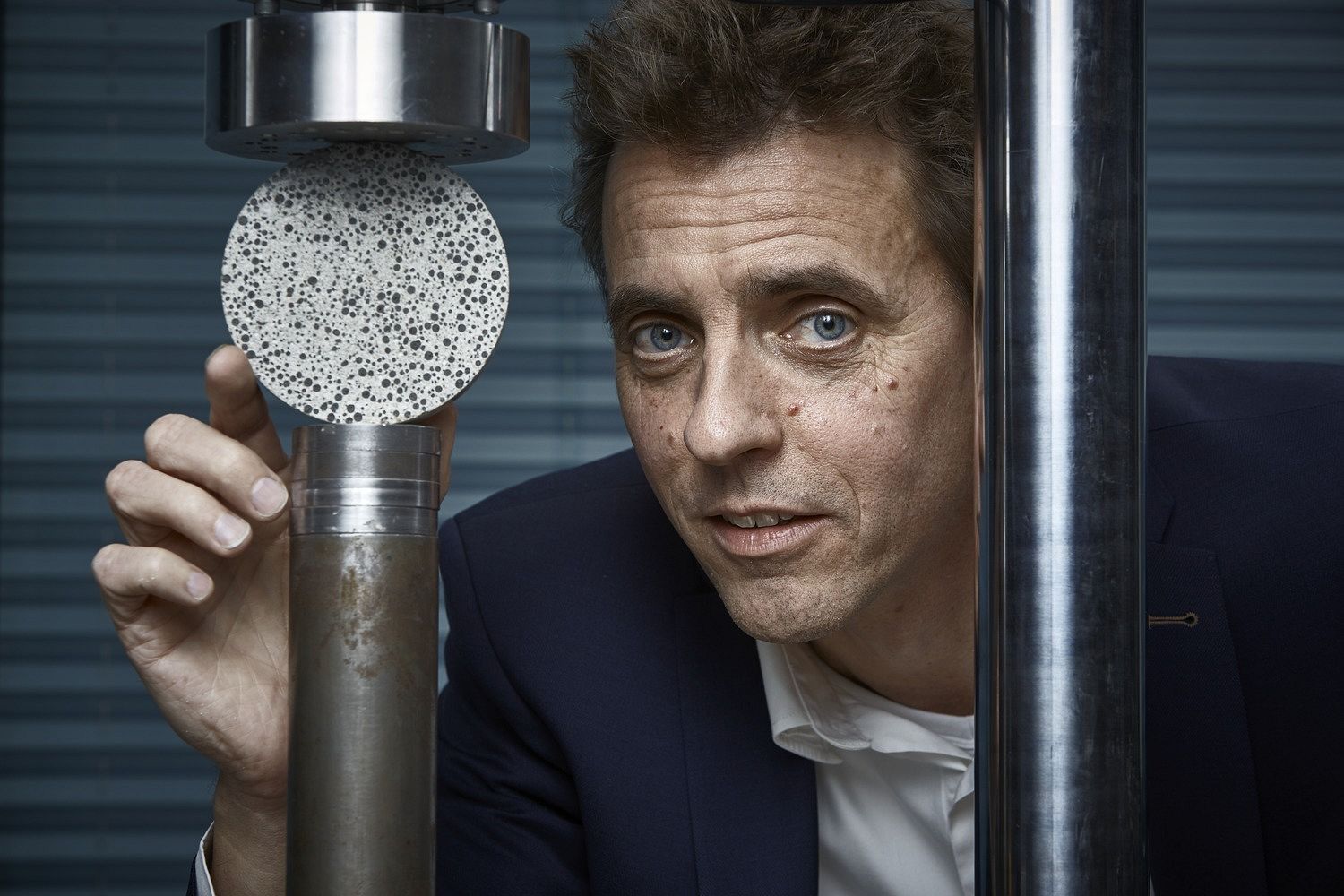Plants and animals can heal themselves so why not concrete? That vision led microbiologist Henk Jonkers to create self-repairing concrete, and a place in the finals of the European Inventor Award 2015.
70% European infrastructure is made of concrete, which is fine until the cracks appear – then it gets expensive. The European Union spends €6 billion a year repairing cracks in bridges, roads, tunnels and underground containers, for example, which is a time-consuming and often dangerous business. Concrete cracks when it’s under tension so engineers usually reinforce it with expensive steel during the building process. But inspired by organic self-healing processes, Jonkers of TU Delft’s Faculty of Civil Engineering and Geosciences, wondered whether limestone-producing bacteria could be incorporated in the concrete production process.
Thinking about that way that bones in the human body heal naturally through mineralisation from osteoblast cells, Jonkers set about creating a similar self-regenerating technique for our most widely used construction material using bacteria. Since concrete is highly alkaline, Jonkers selected bacterial species that thrive in similar conditions in nature: in this case, bacteria from lakes near volcanoes. “These bacteria are hot and cold resistant”, said Jonkers, “and form spores that can lie dormant for up to 200 years.”
Jonkers’ idea was to add bacterial spores to the cement mixture during the building process, together with a bacterial nutrient, calcium lactate. The bacteria then lie dormant and are only activated by water reaching the bacteria through any cracks that start to develop in the concrete. Once this happens, the bacteria wake up, eat the nutrient, and then secrete limestone, the main component of the cement in concrete, closing the crack. It’s a process that takes just three weeks, no matter how long the crack, as long as it’s no wider than 0.8 millimetres.
Aside from the self-repairing concrete for use in building new structures, Jonkers has also developed a system for spraying cracks in existing buildings made from conventional concrete. This liquid repair system, complete with limestone-producing bacteria, will be launched on the market later this year. Meanwhile, Jonkers has been named as a finalist of the European Inventor Award in the category ‘Research’. The ceremony takes place in Paris on June 11, 2015 and the European Patent Office (EPO) will present the award.



Comments are closed.